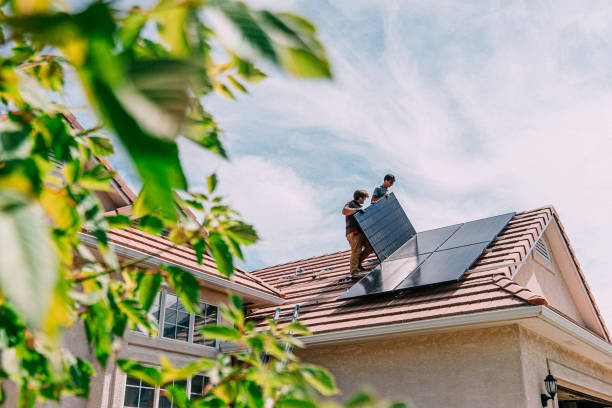Portable 5 kW solar system for garden & terrace – current cost overview
Portable solar systems have become increasingly popular among homeowners looking to harness renewable energy without permanent installation. A 5 kW portable solar system offers a flexible solution for powering garden spaces, terraces, and outdoor areas while maintaining mobility and ease of setup. These systems provide sufficient capacity for various applications, from lighting and small appliances to powering garden offices or entertainment spaces. Understanding the costs, features, and available options helps you make an informed decision about investing in portable solar technology for your outdoor living areas.

Portable solar systems represent a growing segment of renewable energy solutions, particularly appealing to those who want clean power without the commitment of rooftop installations. These systems combine solar panels, battery storage, and inverters into manageable units that can be relocated as needed, making them ideal for gardens, terraces, and temporary outdoor setups.
What defines a 5 kW portable solar system?
A 5 kW portable solar system refers to a solar power setup capable of generating approximately 5 kilowatts of electricity under optimal conditions. Unlike traditional rooftop installations, these systems feature modular designs with wheels, handles, or lightweight frames that allow repositioning throughout your property. The system typically includes foldable or rigid solar panels, a battery bank for energy storage, a charge controller to regulate power flow, and an inverter to convert DC electricity into usable AC power. Most 5 kW systems can power essential garden equipment, outdoor lighting, small refrigerators, power tools, and even temporary workspace setups. The portability factor makes them particularly valuable for renters, seasonal properties, or those who prefer flexibility in their energy solutions.
Understanding portable solar system pricing structures
The cost of portable solar systems varies significantly based on components, quality, and brand reputation. Entry-level 5 kW portable systems typically start around £3,500 to £5,000, while premium models with advanced battery technology and monitoring capabilities can exceed £8,000 to £12,000. Several factors influence pricing, including battery capacity measured in kilowatt-hours, panel efficiency ratings, inverter quality, and additional features like smart monitoring apps or weatherproof enclosures. Systems with lithium-ion batteries command higher prices than those with lead-acid alternatives but offer longer lifespans and better performance. Installation costs remain minimal compared to fixed systems since most portable units require only basic setup, though professional consultation may add £200 to £500 to your initial investment. When comparing prices, consider the total system value including warranty coverage, which typically ranges from two to ten years depending on the manufacturer.
Real-world cost comparison for portable solar systems
When evaluating portable solar options, examining specific providers and their offerings provides practical insight into market pricing. The following comparison reflects current market conditions for portable solar systems suitable for garden and terrace applications:
| System Capacity | Provider | Cost Estimation |
|---|---|---|
| 5 kW Portable System | EcoFlow | £4,200 - £5,800 |
| 5 kW Portable System | Bluetti | £3,800 - £5,200 |
| 5 kW Portable System | Goal Zero | £5,500 - £7,200 |
| 10 kW Portable System | EcoFlow | £8,500 - £11,000 |
| 10 kW Portable System | Bluetti | £7,800 - £10,500 |
| 3 kW Portable System | Jackery | £2,400 - £3,600 |
Prices, rates, or cost estimates mentioned in this article are based on the latest available information but may change over time. Independent research is advised before making financial decisions.
Comparing 5 kW versus 10 kW portable solar systems
Choosing between a 5 kW and 10 kW portable solar system depends on your energy requirements and budget considerations. A 5 kW system generally suffices for moderate outdoor power needs, including garden lighting, small appliances, entertainment systems, and occasional power tool usage. These systems typically weigh between 50 to 80 kilograms when fully assembled, making them manageable for repositioning around your property. In contrast, 10 kW systems deliver double the power capacity, supporting more demanding applications like running multiple appliances simultaneously, powering garden workshops, or providing backup power for larger outdoor events. However, 10 kW systems come with increased weight, often exceeding 120 kilograms, and significantly higher costs ranging from £7,800 to £11,000. For most residential garden and terrace applications, a 5 kW system provides adequate power while maintaining genuine portability. Consider your typical energy consumption patterns, peak usage times, and whether you need the system for emergency backup or regular daily use when deciding between capacities.
Key considerations when purchasing a portable solar system
Several factors beyond initial cost should influence your purchasing decision. Battery technology plays a crucial role in system performance and longevity. Lithium iron phosphate batteries offer superior cycle life, often exceeding 3,000 charge cycles, while traditional lithium-ion batteries typically provide 1,000 to 2,000 cycles. Panel efficiency determines how much electricity your system generates from available sunlight, with modern panels achieving 18 to 22 percent efficiency ratings. Expandability features allow you to add additional panels or battery modules as your needs grow, providing investment protection. Weather resistance ratings indicate how well the system withstands outdoor conditions, with IP65 or higher ratings recommended for regular garden use. Smart monitoring capabilities through mobile applications enable real-time tracking of energy production, consumption, and battery status. Warranty coverage should include both panels and battery systems, with reputable manufacturers offering at least five years for panels and two to three years for batteries.
Practical applications for garden and terrace solar systems
Portable 5 kW solar systems excel in various outdoor scenarios. Garden offices and workshops benefit from reliable power without trenching cables from your main property. Outdoor entertainment areas can support sound systems, projectors, and lighting for evening gatherings without relying on extension cords. Greenhouse operations utilize solar power for ventilation fans, heating mats, and automated watering systems. Seasonal properties and allotments gain electricity access where grid connections prove impractical or expensive. Emergency preparedness improves as these systems provide backup power during outages while remaining accessible in your garden. Camping enthusiasts and caravan owners appreciate the ability to transport substantial power capacity for extended off-grid adventures. The flexibility to reposition your system throughout the day maximizes sun exposure and energy generation, optimizing your return on investment.
Maximizing value from your portable solar investment
Optimizing your portable solar system’s performance extends its value and lifespan. Position panels to face south in the Northern Hemisphere, adjusting angles seasonally to match the sun’s position. Regular cleaning of panel surfaces maintains efficiency, as dirt and debris can reduce output by 15 to 25 percent. Battery maintenance includes avoiding complete discharge cycles when possible and storing systems in temperature-controlled environments during extreme weather. Monitoring energy consumption helps identify inefficient devices and adjust usage patterns to match solar generation. Consider pairing your system with energy-efficient LED lighting and appliances to maximize available power. Protective covers and weatherproof enclosures safeguard components from moisture and UV damage when systems remain outdoors. Annual professional inspections identify potential issues before they compromise system performance, though most portable units require minimal maintenance compared to fixed installations. Understanding your system’s capabilities and limitations ensures realistic expectations and satisfaction with your investment in portable solar technology for garden and terrace applications.



